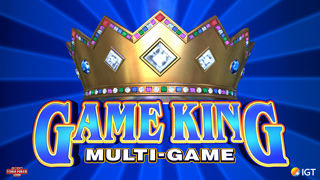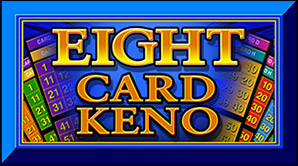Math Help
-
hilljerry2269
- Forum Rookie
- Posts: 26
- Joined: Mon Jun 04, 2007 2:09 pm
Math Help
Hi Math people
If one standard deviation for 4 of a kind is 257 hands[based on 420 being average] and 514 being 2 standard deviations, does this mean 95% of the time a 4 of a kind will show in 934 hands?
My test program is broken or I would do it there.
Can any one help?
Jerry
If one standard deviation for 4 of a kind is 257 hands[based on 420 being average] and 514 being 2 standard deviations, does this mean 95% of the time a 4 of a kind will show in 934 hands?
My test program is broken or I would do it there.
Can any one help?
Jerry
-
New2vp
- Video Poker Master
- Posts: 1853
- Joined: Mon Sep 11, 2006 4:02 am
No, but you are close, sort of.
The number of hands between hitting quads is an example of a random number with what is called a "geometric distribution." If the probability of hitting a quad is 1/420 [ p ], then the mean is indeed 420 [ 1/p ], but the standard deviation cannot be as you indicated. Here the standard deviation is quite close to the mean, about 419.4997. The formula for the standard deviation of a geometric distribution is:
the square root of [ (1-p)/p^2],
so, for probabilities this small, the standard deviation is really close to 1/p, the same as the mean.
A 95% confidence interval for the number of hands between quads starts with 1 hand, which is only about 1 standard deviation from the mean, and ends with 1257 hands, which is indeed about 2 standard deviations higher than the mean. This DOES mean that 95% of the time, quads will appear within 1257 hands. [1 , 1257]
Usually the 2 standard deviation rule relates to a normal bell-shaped distribution, but it seems also to work well with the geometric distribution. One should note that with a mean of "m" and a standard deviation of "s", the 95% confidence interval for a normal distribution is about
[m - 2s, m + 2s], and
the 95% confidence interval for a geometric distribution is shorter, being about
[m - 1s, m + 2s].
Here, m - 1s is very close to 1 and can be replaced by 1 (one).
By the way, if you are playing Jacks or Better 9/6 with perfect strategy, the 95% confidence interval, with an average value of 423.2722 hands, between quads is [1, 1267].
The number of hands between hitting quads is an example of a random number with what is called a "geometric distribution." If the probability of hitting a quad is 1/420 [ p ], then the mean is indeed 420 [ 1/p ], but the standard deviation cannot be as you indicated. Here the standard deviation is quite close to the mean, about 419.4997. The formula for the standard deviation of a geometric distribution is:
the square root of [ (1-p)/p^2],
so, for probabilities this small, the standard deviation is really close to 1/p, the same as the mean.
A 95% confidence interval for the number of hands between quads starts with 1 hand, which is only about 1 standard deviation from the mean, and ends with 1257 hands, which is indeed about 2 standard deviations higher than the mean. This DOES mean that 95% of the time, quads will appear within 1257 hands. [1 , 1257]
Usually the 2 standard deviation rule relates to a normal bell-shaped distribution, but it seems also to work well with the geometric distribution. One should note that with a mean of "m" and a standard deviation of "s", the 95% confidence interval for a normal distribution is about
[m - 2s, m + 2s], and
the 95% confidence interval for a geometric distribution is shorter, being about
[m - 1s, m + 2s].
Here, m - 1s is very close to 1 and can be replaced by 1 (one).
By the way, if you are playing Jacks or Better 9/6 with perfect strategy, the 95% confidence interval, with an average value of 423.2722 hands, between quads is [1, 1267].
-
hilljerry2269
- Forum Rookie
- Posts: 26
- Joined: Mon Jun 04, 2007 2:09 pm
Hi N
Thank you very much. I thought I was in the right ballpark.
Just not to close to the hitters box.
Jerry
Thank you very much. I thought I was in the right ballpark.
Just not to close to the hitters box.
Jerry

























































